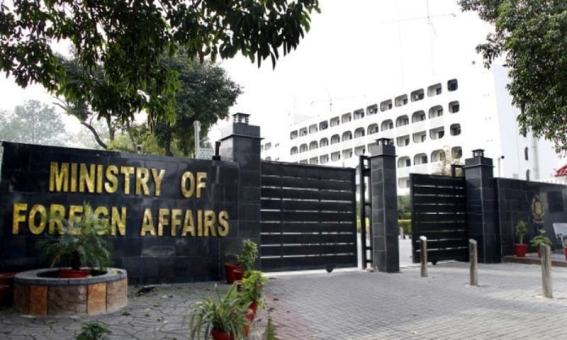ISLAMABAD, Oct 23 (APP): The Artificial Intelligence (AI)-based trail cameras installed at strategic locations in the Gilgit-Baltistan (GB) region have turned human-wildlife conflict into human-wildlife coexistence as this latest technology has significantly reduced Snow leopard attacks on the livestock at the targeted sites.
This was stated by the World Wide Fund for Nature-Pakistan (WWF-Pakistan) in the press release issued on International Snow Leopard Day observed on Wednesday. To highlight the benefits of these camera traps for Snow leopards, livestock, and local people, WWF-Pakistan also released a short documentary on its digital platforms.
WWF-Pakistan believes that human-wildlife conflict is one of the key reasons for the decline in the Snow leopard population. In the past, several Snow leopards have been killed or hunted by local communities in retaliation for their attacks on the livestock. In addition to this threat, poaching, illegal hunting, and habitat loss resulting from adverse climate change impacts also endanger the Snow leopard population across its habitat range in Central and South Asia.
WWF-Pakistan with the support of the Lahore University of Management Sciences (LUMS) developed and installed five AI-based camera traps at strategic locations where Snow leopard depredations were reported by the representatives of the local communities. These cameras detect the presence of Snow leopards in the surroundings, transfer the data to a centralized system, and generate alerts for members of local communities about the predator. As a result, local communities safeguard their livestock either grazing in the fields or being kept in the household. The technology has significantly reduced the attacks of Snow leopards on livestock turning human-snow leopard conflicts into a symbiotic relationship.
Commenting on this joint initiative, Director General, WWF-Pakistan, Hammad Naqi Khan said that livestock depredation by Snow leopards is a major cause of human-wildlife conflict in various valleys in three landscapes such as Karakoram-Pamir, Hindu Kush, and Himalaya in Pakistan.
This existential threat has undermined conservation efforts and halted progress to achieve desired outcomes, he said adding that the use of this technology is vital not only for the protection of the endangered Snow leopard population, but it safeguards the livestock.
“This has led to the improvement of the declining population of the Snow leopard and has reduced the economic losses born by the livestock herders at the project sites”, he noted.
Khan also proposed that this technology could be replicated for other wild species, which are threatened by human retaliation.
In April 2024, WWF-Pakistan released a report, which put a spotlight on the threats to Snow leopards and associated prey populations from infrastructure development projects in GB. The study was undertaken through the project titled, “Building Ecological and Sustainable Transport/Linear Infrastructure for Snow Leopards in the Hindu Kush Karakoram Himalaya Landscape in Pakistan” (BEAST).
The study recommended that there is a need to strike a balance between boosting infrastructure development and conservation of threatened wildlife such as Snow leopards in the region. The study pointed out that the linear infrastructure development, which cuts through the landscape such as roads and railways, has fragmented the Snow leopard habitat. It found that although linear infrastructure improves national and regional economies, it restricts wildlife movement and poses threats to the Snow leopards and their prey species such as ungulates.
Various studies indicate that as Snow leopard is an elusive animal, hence it is difficult to record its exact population in the distribution range across Central and South Asia. However, WWF research indicates that fewer than 7,000 Snow leopards live in the world, of which approximately 200 to 420 individuals inhabit the northern mountain ranges of Pakistan including the GB region, Khyber Pakhtunkhwa (KP), and Azad Jammu Kashmir (AJK).














